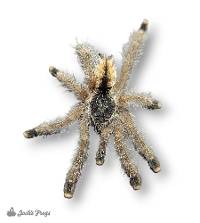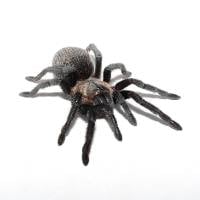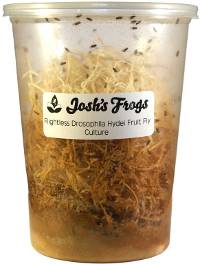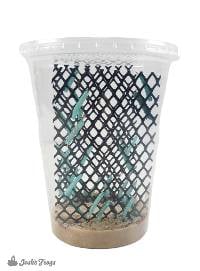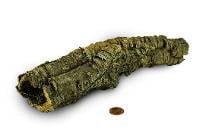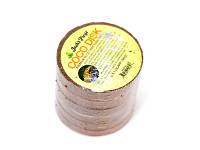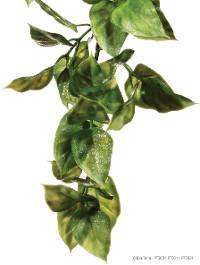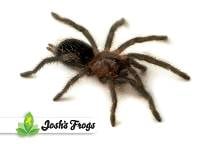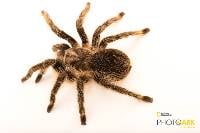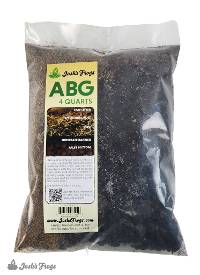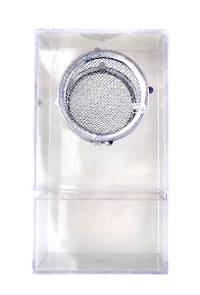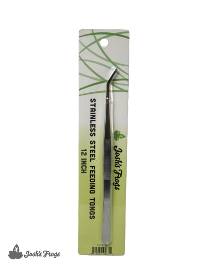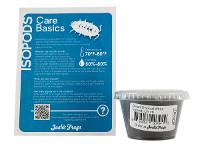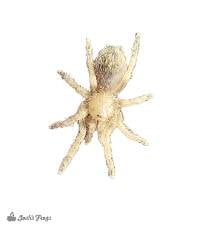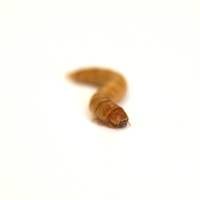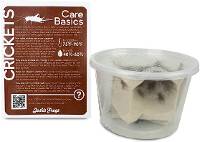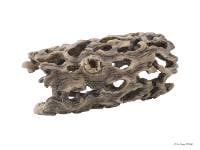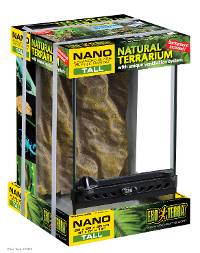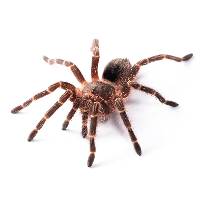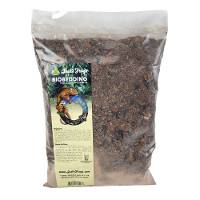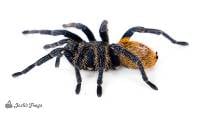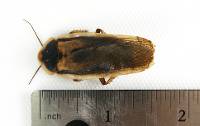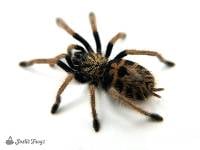Josh's Frogs
Antilles Pink Toe Tarantula - Caribena versicolor | 2 inch (Captive Bred)
Antilles Pink Toe Tarantula - Caribena versicolor | 2 inch (Captive Bred)
$99.99 0.0 out of 5 stars
(0)
0.0 out of 5 stars
(0)About This Product
SPECIAL NOTE: USPS forbids shipping venomous spiders or scorpions in the mail.
Because of this, we ship these animals FedEx priority overnight for a flat fee of $39.99.
Defining Characteristics:
- Original species description was based on a male and female from two different species, causing future taxonomic confusion
- Able to jump up to 30cm
- Regarded as one of the most beautiful tarantulas in the hobby
Name: Caribena versicolor: The name translates to "Caribbean" (Caribena) and "changeable in color" (versicolor). Thus it is the Caribbean color-changing tarantula. This name is probably a reference to the variety of coloration found over its body, ranging from blue-greens to purple. The common name references the island chain from which the species originates and the pink pads of its terminal tarsi. The species was originally categorized in the genus Aviculara.
Recommended Enclosure Size & Setup: Antilles pink toes can be kept in a 12x12x18 inch enclosure, as species in this genus tend to build their nests toward the top of the terrarium. They are arboreal so they will also benefit from a variety of terrarium furniture as well to climb on.
ABG mix, coco cradle, and Dig-It are all good substrate options for this species, but our Pet Bug Team prefers ABG all the way! 4-5 inches of substrate will help the terrarium retain humidity while still allowing for this species' high ventilation requirements.
Want to spice up your enclosure with live plants? Our experts have curated kits of easy-to-care-for and SAFE plants for your tarantula. Check them out here!
Temperature (°F): 78-82°. This spider’s native habitat is highly stable in temperature and humidity, making a low-powered heating pad with thermostat to establish a heat gradient necessary. The spider will situate itself in whatever part of the heat gradient it finds comfortable.
A thermometer is recommended to keep an eye on temperatures in the enclosure.
Humidity: The humidity for this species can be a bit trickier to maintain than others, as their requirement of lots of cross ventilation can mean the enclosure dries out quickly. Humidity should be kept around 70%, this can be achieved by making sure the substrate always remains at least lightly moistened and by misting the sides of the enclosure once a week, dependent on the ambient humidity in the room.
A hygrometer is recommended to monitor humidity within the enclosure.
Size: These specimens are at least 2 inches at time of purchase. This species can achieve diagonal leg span of up to around 5 inches.
Age: Females of this species can live up to 12 years of age, with males averaging about one third of that lifespan.
Feeding: These spiders are currently eating two to three 1/2 inch crickets, once a week. There are a variety of appropriate prey items that you can offer, such as roaches, waxworms, black soldier fly larvae, hornworms, and silkworms. Consider feeding your prey items with our gutload formula to give your pet well-rounded nutrition.
We recommend that the prey items not be much longer than the tarantula's “head” is wide. Larvae are an exception—our larvae are harmless. Since they are very high in fat, they're not the best staple diet, however they make a great weight gain supplement.
Remove uneaten prey items after 24 hours, these may stress your animal out or endanger the spider during molting. Never attempt to feed a freshly molted tarantula less than a week after their molt to prevent injury to the spider. Depending on its age, the hardening process could take anywhere from 48 hours all the way up to a week.
Sexing: To identify a male or female before it has reached sexual maturity, you will need to examine its cast skin. Females will have a folded area in the abdominal region which will eventually connect to her spermatheca when she is mature.
Alternatively, when sexually mature, the spiders may be sexed based on the proportion of their abdomen to the rest of their body. The male’s abdomen will be smaller than its cephalothorax while the female’s will be about the same size or slightly larger. This method is much easier than using a cast skin as this species is very small and identifying the characters previously described will probably require a microscope.
Antilles Pink Toe tarantulas sold by Josh's Frogs are sold as unsexed animals.
Color/Pattern: The Antilles pink toe tarantula is rightly regarded as gorgeous with a metallic blue-green sheen to its carapace (most clear on its cephalothorax which is devoid of hair), and pink to purple hairs covering its abdomen and legs. These hairs are quite long, giving the tarantula a fluffy appearance. The hairs are urticating however so we advise resisting the urge to pet it.
Social Behavior: C. versicolor are not social creatures, and any attempts to cohabitate will likely result in cannibalism.
These are quick spiders that can jump (especially as slings), so be aware. They also have urticating hairs which can be kicked and/or rubbed off as a defense mechanism, therefore it's recommended to wash your hands after any tank maintenance.
Another fun defensive strategy: this species can throw it's feces if it feels threatened, at an impressive distance of up to 3 feet!
Natural Range: Martinique (a region of France, Caribbean island that’s part of the Lesser Antilles)
Links of Interest:
- Arachnoboards: a community of spider enthusiasts that will be able to or have already answered almost any question you can think of with regards to tarantulas.
Still not sure if the Antilles Pink Toe tarantula from Josh's Frogs is the right pet for you? Read the reviews below and see what other customers are saying!
Shipping
After placing an order containing a live animal, you will receive a scheduling email containing our JotForm scheduling link to schedule your new pet's delivery date.
With this scheduling link, you will be able to schedule your order's delivery up to 30 days in advance. You will be able to choose a date of delivery for Tuesday-Saturday (Saturday arrival depends on the carrier's service availability) with the estimated time of arrival generally being 12pm, or 4:30pm for more rural areas. Overnight lows must be above 40°F to ship directly to you (or above 30°F for FedEx Ship Center pickups) as well as below 90°F by estimated time of arrival.
If you require further assistance, or prefer to talk to one of our Customer Service agents, please feel free to reach out to our [email protected] email or our phone line 1-800-691-8178.
Other Customers Also Bought
Customer Reviews
0.0 out of 5 stars
Review data
5 star reviews
- 0%
4 star reviews
- 0%
3 star reviews
- 0%
2 star reviews
- 0%
1 star reviews
- 0%


